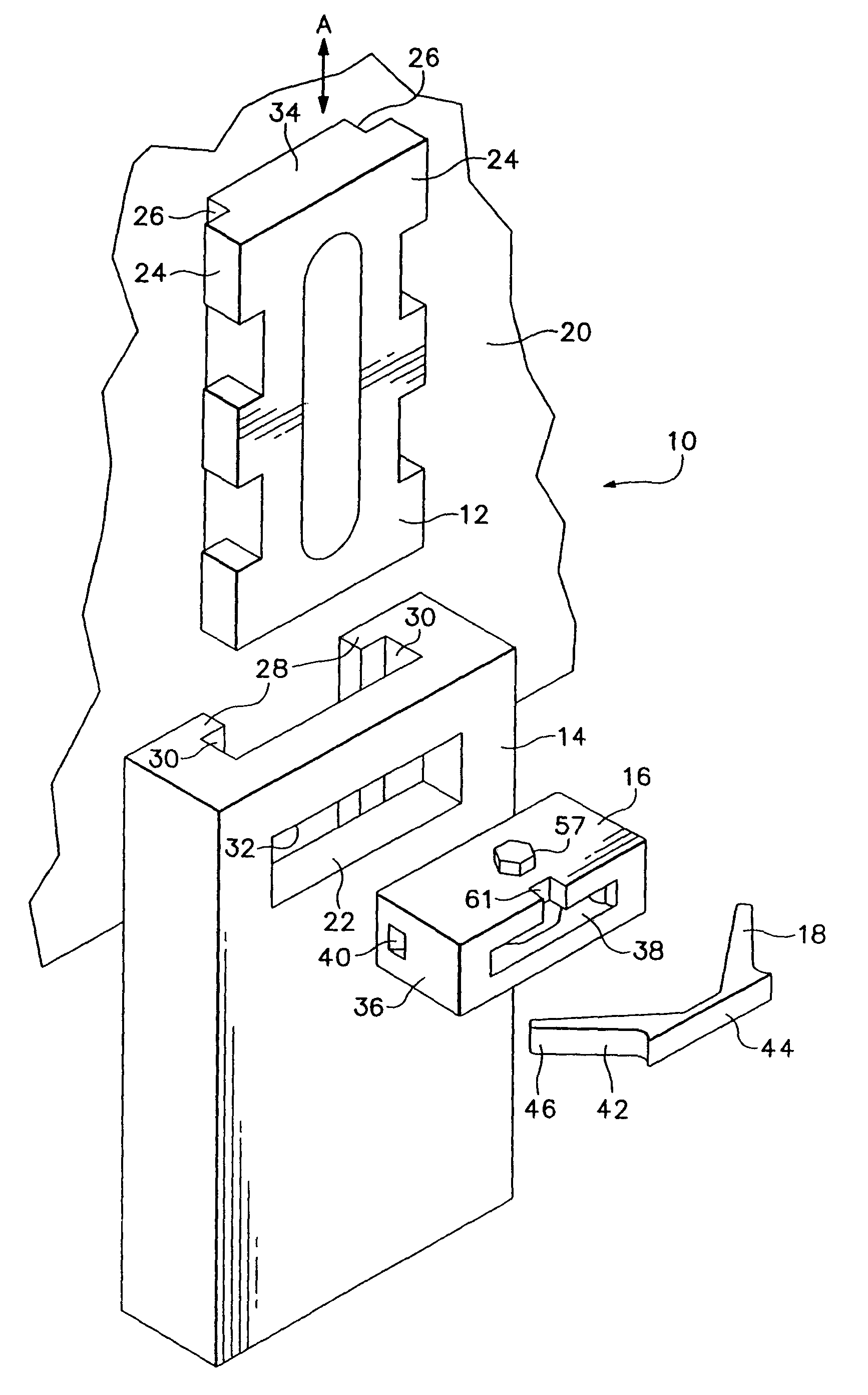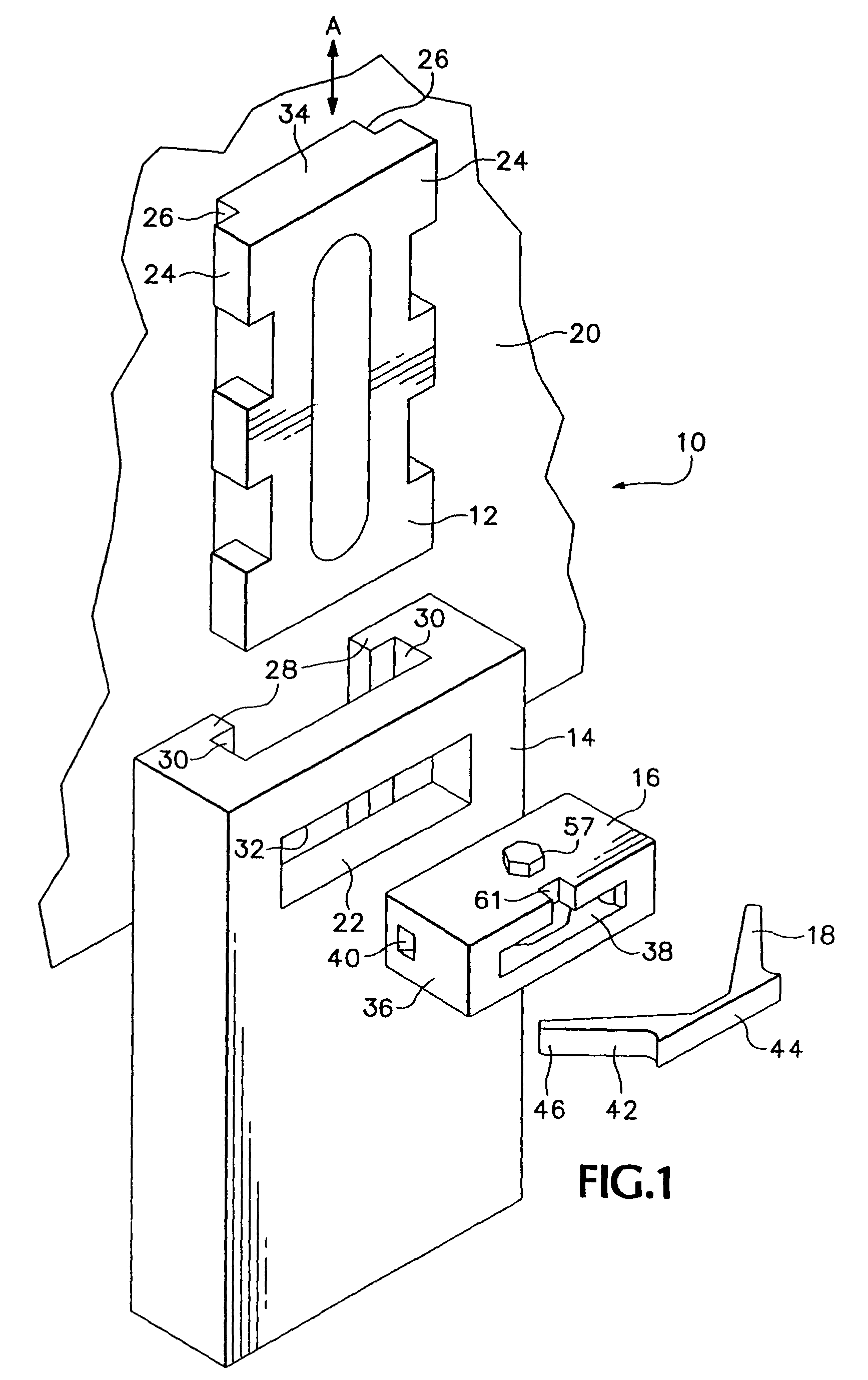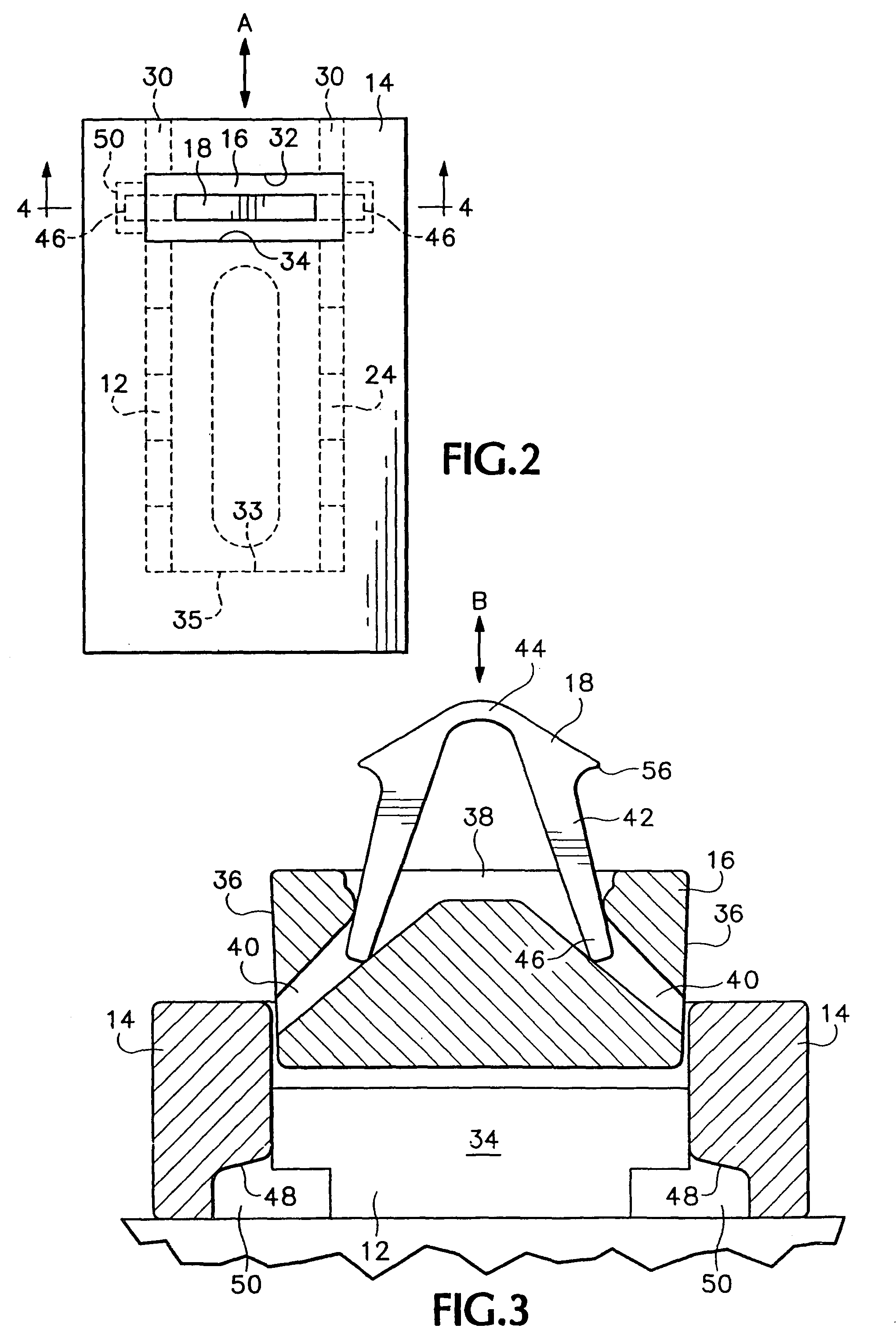Lock with internal retainer
a technology of internal retainers and locks, which is applied in the direction of rod connections, couplings, drags, etc., can solve the problems of interfering with the removal of the lock body
- Summary
- Abstract
- Description
- Claims
- Application Information
AI Technical Summary
Benefits of technology
Problems solved by technology
Method used
Image
Examples
Embodiment Construction
[0029]The present invention relates to a locking assembly for securing two members with respect to one another, such as a moveable or replaceable wear member with respect to a fixed base member. The present invention finds application in many different types of situations in which it is desired to couple or secure two members with respect to one another. For example, the present invention may be used to secure wear members to excavating or mining equipment, such as a wear member to the exterior of a bucket, wear members to stationary equipment, points to adapters, etc.
[0030]Referring now to the drawings, wherein like numerals refer to like elements, FIG. 1 shows an exemplary assembly 10 comprising a base member 12, a wear member 14, and a lock comprising a lock body 16 and a retainer 18. The base member 12 is attached to the exterior of the surface 20 to be protected, such as an exterior surface of a dragline bucket or other earthmoving or excavating equipment. The wear member 14 sl...
PUM
 Login to View More
Login to View More Abstract
Description
Claims
Application Information
 Login to View More
Login to View More - R&D
- Intellectual Property
- Life Sciences
- Materials
- Tech Scout
- Unparalleled Data Quality
- Higher Quality Content
- 60% Fewer Hallucinations
Browse by: Latest US Patents, China's latest patents, Technical Efficacy Thesaurus, Application Domain, Technology Topic, Popular Technical Reports.
© 2025 PatSnap. All rights reserved.Legal|Privacy policy|Modern Slavery Act Transparency Statement|Sitemap|About US| Contact US: help@patsnap.com



